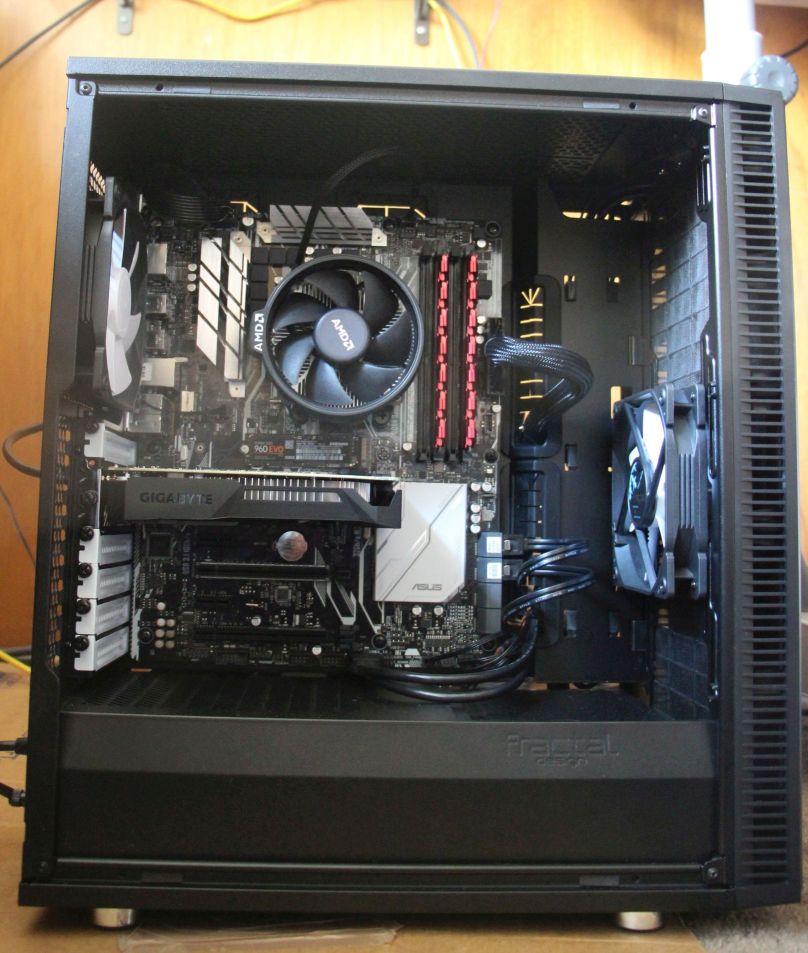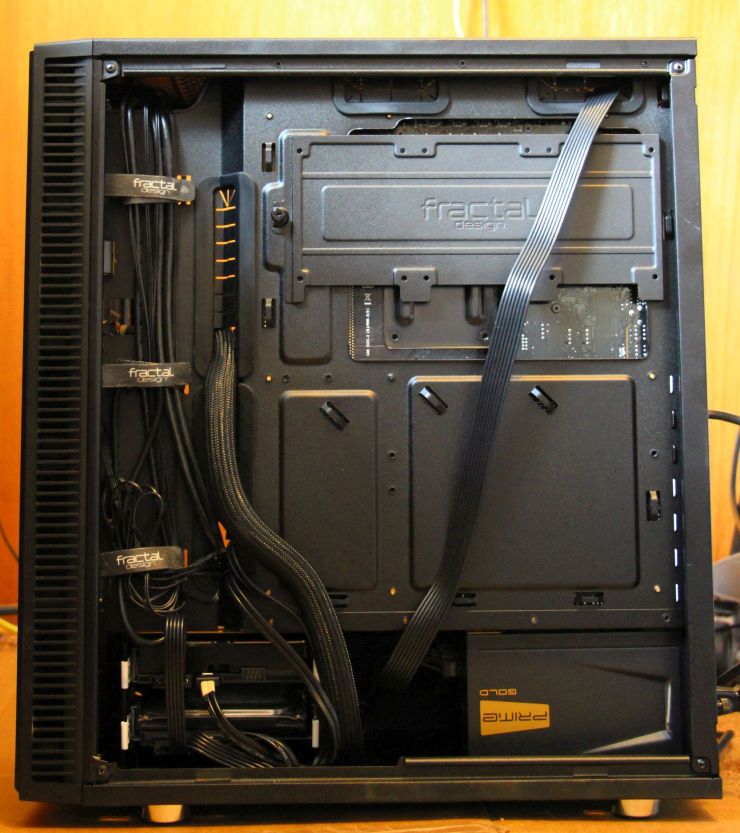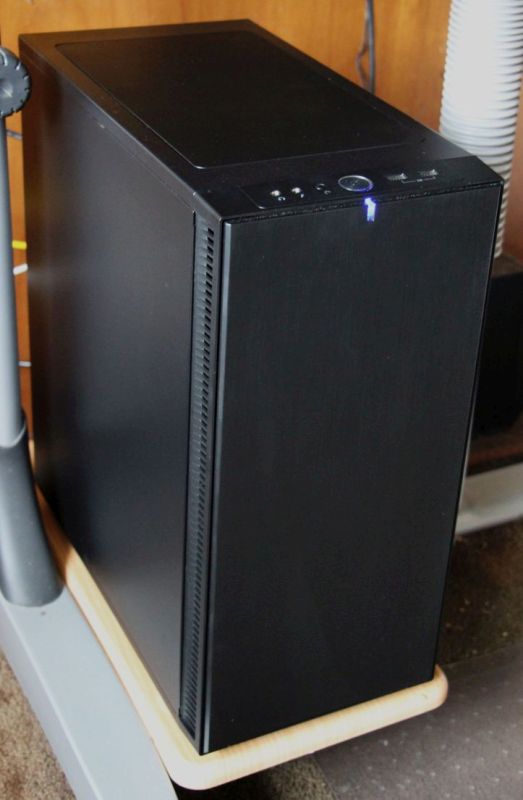 |  |  |
OK, these days, desktop machines aren't of much interest to a lot of people. But some of us are old school, and build our own. I just built another one (been a while, actually). What I'm going for is a reasonably powerful workstation machine also running a low traffic server, not a gaming rig. And as silent as possible, without being in danger of frying itself.
Start with a case called the Fractal Design Define C. Fractal Design is a company that is popular for silent PCs. Interesting things they recognize here:
What went in it:
 |  |  |
Remarkably easy build, and I think I've done a fairly neat job, for once. Put it together, and it fired right up, albeit with the traditional Asus long POST time (with a blank screen for just long enough to make you nervous). Notes:
Well, I got quiet. Almost eerily silent actually. It's a mostly featureless black box that whispers a little. Anything making noise in the house, like the furnace running, drowns it out completely, even when I'm sitting right next to it. With that unimpeded airflow, the two stock case fans and the stock CPU cooler should be fine. The PSU and the graphics card both have fans that only come on when needed.
That isn't the most powerful Ryzen chip, but note that it's only 65 watts thermal design power. Curious progression in the last 3 CPUs I've used - the gains in efficiency along with compute power have been impressive:
| AMD CPU | Socket | Cores | Benchmark | TDP Watts |
|---|---|---|---|---|
| Phenom II 955 | AM3+ | 4 | 3943 | 125 |
| FX-6300 | AM3+ | 6 | 6378 | 95 |
| Ryzen 7 1700 | AM4 | 8 | 13752 | 65 |
I've generally been a fan of AMD as a "bang for the buck" option, mostly born out by passmark's "price performance" benchmarks, although there are overlaps. The i7 versions comparable to this Ryzen in performance according to their benchmarks are 1.5 - 2.5 times the price.
The graphics card is more than I really need, but it's still classed as an "entry level" card. It wouldn't make gamers happy, although it would probably play a lot of games reasonably well. Workstation - good CPU with potential to drop in a hotter one. Coupled to fast drives and ample memory, with kind of a "meh" graphics card.
Graphics is sort of a funny thing on AM4 socket boards. Almost all, if not all, of them have video ports on them. This one has a Display port and an HDMI port. So why have I got a graphics card in there? Well, AMD has designed the AM4 socket to work with a couple CPU lines - the Ryzen, and the A Series "APU". APU is "Accelerated Processing Unit", and means that they've put a CPU and a GPU on the same die (they own ATI now, you see). So the AM4 boards only have functional "onboard" video if you use an APU in them. Currently, the A series offerings are lower power CPUs and GPUs aimed at the "budget" market which usually uses onboard video. So we have a wide range of AM4 boards, from micro-ATX budget boards up to high end boards for hard core gamers, who are likely to use paired high powered graphics cards in them, and overclock the hell out of the Ryzen they run in it. But they all have video ports and will take an A Series. It might make sense when higher powered APUs come out. For right now it leads to a lot of comical reviews by customers on online retail sites - "This board is a piece of crap. The onboard video doesn't work at all." Followed by constant replies, sometimes from some poor manufacturer's rep, repeatedly explaining that the board's video, or that of any other AM4 board, is not intended to work with the CPU they are using.
Looking at the back, I realize the logic of printing oriented in different directions on the opposing sides of the power supply. It means that whether you mount it with the fan pointed up or down, the printing on the side pointing out from the motherboard is printed right side up, though upside down facing the back. Of course, with a PSU shroud, you can't see that side of the thing. What I REALLY want to know is why Seasonic insists on packaging their power supplies with a velvet "carry bag". Just who is going to be taking it out and transporting it around?